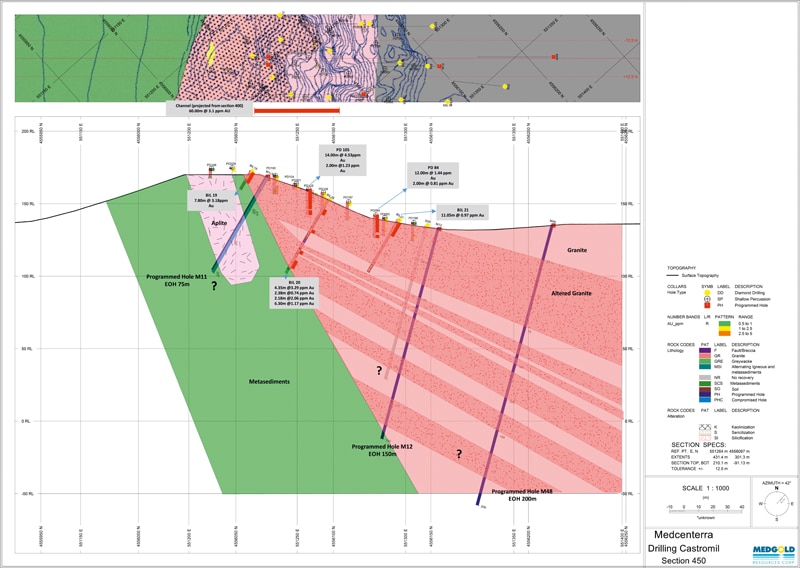Choosing exploration software can be a difficult, even fraught experience. The more expensive exploration becomes, the more crucial the decision, especially for juniors with projects that have progressed beyond the grassroots stage but are not yet considered advanced.
“It’s like buying school shoes,” says Jim Royall, Exploration Manager for Medgold Resources in northern Portugal, who offers a means to narrow down the choices. “Do you buy a snug fit for now or buy a bigger size, hoping you will grow into them?”
After years of experience on projects in Europe, Africa and South America, Royall is convinced that the former option is preferable because it mitigates the risk of the current program while acknowledging the uncertainty of the future: if the project is successful, software requirements will fall into place.
Medgold is focused mainly on orogenic gold systems in northern Portugal. The company’s most advanced project is Lagares on the Valongo belt, where structurally controlled and intrusion hosted gold mineralization occurs at the margins between sediments and younger granitic intrusions.
The project is blessed with a wealth of historical data from at least six different drilling campaigns, plus extensive mine workings dating from Roman times. But much of the data is of poor quality, a factor that made choosing the right software even more critical.
The drilling that was done in the past, when companies accepted 60-70% core recovery or less, is substandard,” says Royall. “We’ve resampled the old core and collected new samples and we needed the ability to integrate those verification datasets with the historical data.
Jim Royall, Exploration Manager for Medgold Resources

After looking at different types of GIS-based software and programs designed for more advanced exploration, Medgold selected Geosoft Target. Here are the four main criteria Royall urges every exploration manager to consider before selecting software:
Can you justify the cost?
This is the most obvious consideration, especially for juniors struggling to raise the financing for exploration. Royall suggests choosing software that meets as many of your current needs as possible. Target, for instance, allows Medgold to develop a geological model for its more advanced Lagares project, while providing the data processing capability to assess projects further down the pipeline.
How important is quality control?
Historical data is meaningless and potentially dangerous if that data is corrupted or substandard. So having a program that can recognize bad data even as new information is collected is essential for locating quality drill targets. “Target forces us to have good data,” says Royall. “We don’t fully understand the controls on the mineralization at Lagares. But by being able to integrate the data we can start drawing vectors and build cross sections that show the controls.”
Will you be working in multiple dimensions?
Most exploration programs have both 2D (surface mapping and sampling) and 3D (drilling; geophysics) components, so software that can easily move between – and integrate data from – the two dimensions makes targeting much easier. “You need software that handles 2D data extremely well, but also allows integration with 3D drill data so that you don’t have to bring in another software package for that,” says Royall.
How easy is it to introduce?
Personal preference and fear of the unknown will always dictate software choices to some extent, but it’s important for every member of the exploration team to be able to collaborate on projects on a common platform. “Target is very intuitive and easy to learn,” says Royall. “The geologists here have been using it off the bat with no formal training.”
When Royall chose Target for the first time as a newly minted exploration manager of Berkley Resources’ uranium projects Spain, he didn’t have much experience on which to base his decision. But years later, he is confident of his selection. By using Target to integrate 2D and 3D data, both historical and modern, Medgold gained a better understanding of the gold mineralization controls at Lagares, leading to the best results ever recorded at the project.
Target was the right choice for Berkley and it will prove itself again with Medgold.
Jim Royall, Exploration Manager for Medgold Resources




